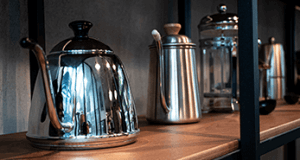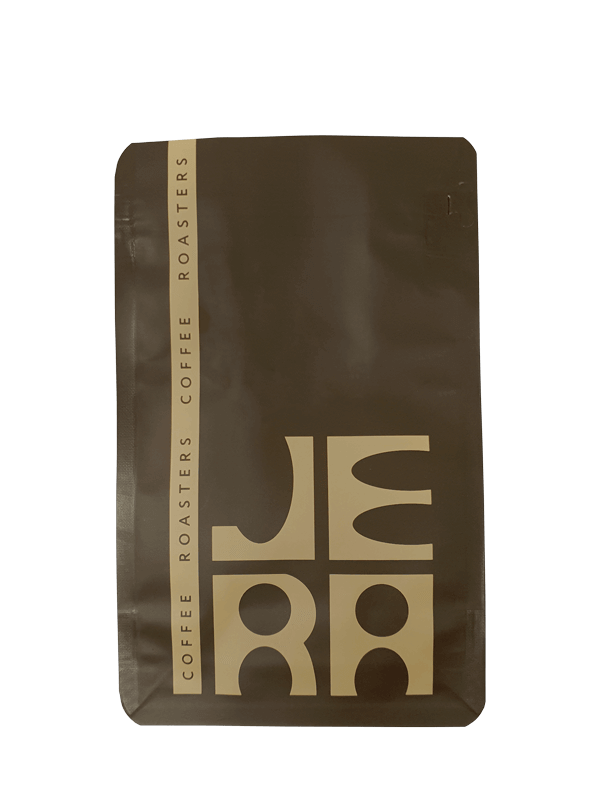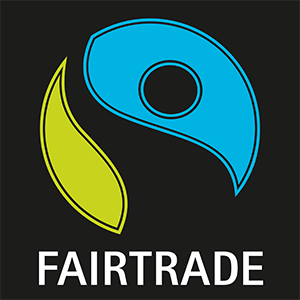קפה קלוי קולומביה | Huila, Finca El Recreo
קפה קלומביאני מזן בורבון ורוד ועיבוד יבש אנארובית
קפה עם גוף בינוני, מרירות נמוכה, מתיקות גבוהה וחמיצות יינית. טעם של פירות צהובים, מאוד פאנקי ופירותי. מצוין להכנת כל סוגי קפה פילטר!
₪70.00 – ₪280.00
ברכישת כל סוגי קפה קלוי בסכום:
בין 600 ש"ח ל-1000 ש"ח עם קוד קופון "15%" תקבלו 15% הנחה
בין 1001 ש"ח ל-1500 ש"ח עם קוד קופון "25%" תקבלו 25% הנחה
מעל 1501 ש"ח עם קוד קופון "30%" תקבלו 30% הנחה
Colombia El Recreo Pink Bourbon
חוסה אספינוזה (José Espinoza) הוא מגדל קפה מהדור השני, שממשיך מסורת משפחתית שהחלה לפני כמעט 50 שנה. החווה שלו, אל רקראו (El Recreo) עברה בירושה בתוך המשפחה וכיום מנוהלת על ידי חוסה יחד עם אשתו ובנו, בסיוע של ארבעה עובדים קבועים. החווה של קפה ממוקמת בעיירה אנדס אלטוס (Andes Altos), שבתחום המוניציפלי של אלחסירס (Algeciras) במחוז הוילה (Huila). גודלה של החווה כ-4 הקטרים, והיא נמצאת בגובה של 1700 מטר מעל פני הים, כאשר מגדלים בה זני קפה קסטיו (Castillo), קטורה (Caturra) ו-גשא (Gesha). במהלך עונת הקטיף, חוסה שוכר שמונה עובדים נוספים שמסייעים לו בקטיף ידני וסלקטיבי של דובדבנים בשלים בלבד. לאחר הקטיף, הדובדבנים מועברים לשלב של הפרדה בציפה להסרת הפגומים, ואז עוברים תסיסה אנאירובית בתוך שקיות אטומות. בסיום, הפולים מיובשים בתוך מרקסינס (marquesinas) – חממות ייבוש מכוסות.
קפה ובורבון
בורבון הוא אחד הזנים החשובים ביותר בתעשיית הקפה. כמו טיפיקה, גם הוא מהווה את אחד האבות הגנטיים של זני ערביקה רבים. כיום, משתמשים בזן בורבון בעיקר כחומר גנטי לפיתוח זנים חדשים ומבטיחים – ואחד מהם הוא בורבון ורוד. אחת התכונות הבולטות של הזן הזה היא צבעו הוורדרד או הסלמוני של הדובדבן. אך הבורבון הוורוד ייחודי גם בפרופיל הטעמים המורכב שלו וברמת המתיקות הגבוהה שבכוס. בורבון ורוד הוא קפה מאוזן מבחינת גוף וחמיצות, עם מתיקות גבוהה וטעמים עשירים שכוללים תווים של פירות ופרחים. גם בתנאי גידול אידיאליים, קשה לגדל את הזן הזה. יש צורך בטיפול מדויק ובבידודו מזנים אחרים כדי לאפשר האבקה מוצלחת. לצד הקושי בגידול, לבורבון הוורוד יש עמידות גבוהה למחלות ותפוקה גבוהה יחסית. הדובדבנים שלו עשירים מאוד בסוכרים, ולכן ניתן להשתמש בשיטות עיבוד שונות – ממסורתיות ועד ניסיוניות. הבורבון הוורוד מושך את תשומת הלב של תעשיית הקפה המיוחדת בעיקר בזכות טעמיו המורכבים, הפרחוניים-פירותיים, והמתיקות יוצאת הדופן שלו.
מיקרולוט
מיקרולוט הוא אצווה של קפה מעונה מסוימת, שקיבלה ציון גבוה בקאפינג ואפשר לעקוב אחרי מקורו. אנחנו יודעים באיזה אזור הוא גדל, איזה חקלאי גידל אותו, איך הוא נקטף ואיך הוא עובד. המידע הזה כשלעצמו לא משפיע ישירות על הטעם. עם זאת, כאשר חקלאי מוכר קפה ישירות, זה בדרך כלל אומר שהקפה גודל, נקטף ועובד בצורה הרבה יותר מוקפדת — מה שבדרך כלל מביא לטעם טוב יותר. גידול של קפה יוצא דופן דורש תשומת לב רבה בכל שלב: מתנאי הגידול ובחירה של דובדבנים בשלים בלבד, ועד בקרה קפדנית על תהליך העיבוד. כדי לגדל קפה כזה, חקלאים משקיעים הרבה מאמץ וכסף. באותו הזמן, הם לוקחים סיכונים משמעותיים — אפילו תקופה קצרה של תנאים לא מתאימים יכולה להרוס את כל מאמציהם. הקפה אולי ייצא טוב, אבל כבר לא יהיה ייחודי, והחקלאי עלול להפסיד כלכלית. מיקרולוטים בדרך כלל יקרים יותר מקפה רגיל משתי סיבות: ראשית, לקפה כזה ניתנת תשומת לב רבה בכל שלב של הייצור. החקלאים חייבים לטפל בגידול בקפידה, לקטוף אותו בדיוק ולעבד אותו בנפרד מהשאר. זה מעלה את עלויות הייצור — ולכן גם את המחיר הסופי. שנית, כתוצאה מהשקעה בפרטים הקטנים, הטעם של קפה כזה יוצא לרוב בהיר ונקי יותר באופן משמעותי. בהרבה חוות מוכרות, הקונים מזמינים מיקרולוטים שנים מראש. בשל הביקוש הגבוה, החקלאים מעלים את המחירים.
קפה מקולומביה
קולומביה היא מדינה הררית, עם גבהים שמגיעים עד 2,200 מטר מעל פני הים. הקפה גדל במדרונות תלולים, ולכן יש לקטוף אותו כולו ביד. המדינה נמצאת ישירות על קו המשווה, ובשילוב עם טווח הגבהים הרחב שבה, ניתן לקצור קפה כמעט כל השנה. רוב הקפה הקולומביאני מגודל בחוות קטנות שבבעלות חקלאים עצמאיים — גודל ממוצע של חווה הוא רק 3 דונם. רבות מהחוות ממוקמות ביערות הרריים, שם הקפה גדל בצל עצים, והגישה אליהן יכולה להיות קשה מאוד. לעיתים קרובות אי אפשר להגיע אליהן ברכב, ולכן חקלאים רבים משתמשים בסוסים או חמורים — שיכולים לעבור במקומות שרכב אינו מסוגל.
האקלים הלח והטמפרטורות הנמוכות בגבהים הגבוהים גורמים לכך שעיבוד רטוב (washed) הוא השיטה הנפוצה ביותר לעיבוד קפה בקולומביה.
קולומביה היא יצרנית הקפה השלישית בגודלה בעולם. חוות הקפה במדינה ממוקמות באזורים הרריים, בטווח גבהים של בין 1,000 ל-2,300 מטר מעל פני הים. בזכות טווח הגבהים הרחב הזה, קולומביה מציעה מגוון רחב של פרופילים לקפה — מקפה קליל ופרחוני ועד קפה עשיר ושוקולדי.
תסיסה אנאירובית
תסיסה אנאירובית היא שיטת עיבוד שבה תהליך התסיסה מתבצע בתוך מיכלים אטומים ללא גישה לחמצן — כמו חביות פלסטיק, מיכלי נירוסטה או שקי GrainPro.
בתחילה, מכינים את הדובדבנים: מבצעים דה-פאלפינג כמו בעיבוד רטוב או Honey (לעיתים משאירים יותר מהציפה), או ששוטפים ומשאירים את הדובדבנים שלמים. במהלך התסיסה, שאריות הציפה והריריות סביב הפולים מתפרקות, ומשתחרר פחמן דו-חמצני (CO₂) . בהשפעתו של ה-CO₂, תרכובות ארומטיות מהציפה ומהמיץ חודרות אל תוך הפולים.
בניגוד לתסיסה הקלאסית (שמתבצעת בהשריה במים) הנהוגה בעיבוד רטוב ונמשכת בדרך כלל בין 10 ל-20 שעות, תסיסה אנאירובית יכולה להימשך עד 120 שעות ולעיתים אף יותר. על המגדלים לעקוב בקפידה אחר זמן התסיסה, רמת החומציות (pH), הלחץ והטמפרטורה בתוך המיכלים כדי למנוע התפתחות של חומצות לא רצויות — כמו חומצה אצטית.
בגלל היעדר החמצן, מספר המיקרואורגניזמים שיכולים לשרוד ולהשתתף בתהליך התסיסה מוגבל. כתוצאה מכך מתקבל פרופיל טעם בולט ומובחן, שלרוב כולל תווים של פירות טרופיים, יוגורט ותבלינים.
פייר טרייד (Fair Trade)
מטרת הסמכה זו היא לתמוך בתנאי עבודה ושכר הוגנים בחוות במדינות מתפתחות. באופן מסוים, היא מקדמת סחר הוגן, ולא מתייחסת רק לקפה אלא גם למוצרים נוספים. ההסמכה פופולרית במיוחד בקרב צרכנים במדינות מפותחות שבהן קיימת מודעות גבוהה יותר לצריכה מוסרית – בעיקר בארצות הברית ובצפון אירופה.
הסמכת Fair Trade מבטיחה שלא נעשה שימוש בעבודת ילדים בחוות, שעובדים מקבלים שכר הוגן, ושמתקיימים תקני בריאות ובטיחות בעבודה. הארגון מבצע בדיקות שוטפות בחוות המאושרות כדי לוודא שהן עומדות בדרישות.
Colombia El Recreo Pink Bourbon
José Espinoza is a second-generation coffee grower, continuing a family tradition that began nearly 50 years ago. His farm, El Recreo, has been passed down through the family and is now managed by José alongside his wife and son, with support from four permanent employees. El Recreo is situated in the town of Andes Altos, within the Algeciras municipality in the Huila region. The farm covers about 4 hectares of land, lies at an elevation of 1700 meters above sea level, and is home to Castillo, Caturra, and Gesha coffee varieties. During the harvest season, José brings in eight additional workers to help carefully handpick only the ripest cherries. After harvesting, the cherries go through a flotation process to remove defective ones, followed by anaerobic fermentation in sealed bags. The final step is drying the beans in marquesinas (covered drying beds).
Bourbon
Bourbon is one of the most important coffee varieties in the industry. Like Typica, it is a parent to many Arabica cultivars. Today, Bourbon is primarily used as genetic material for breeding new, promising varieties—one of which is Pink Bourbon. One of the distinctive features of this variety is the light pink or salmon hue of its cherries. However, what truly makes Pink Bourbon unique is its complex flavor profile and high sweetness in the cup. Pink Bourbon offers a balanced cup in terms of body and acidity, with pronounced sweetness and a layered flavor profile featuring fruit and floral notes. Even under optimal environmental conditions, growing Pink Bourbon is challenging. Farmers must not only carefully care for the plants, but also isolate them from other varieties to ensure successful cross-pollination. Despite the growing challenges, the variety shows strong resistance to disease and delivers high yields. Its cherries contain a high sugar content, making them well-suited for a variety of processing methods—both traditional and experimental. Pink Bourbon continues to attract the attention of the specialty coffee industry, primarily for its complex floral and fruity flavors and remarkable sweetness.
Microlot
A microlot is a batch of coffee from a specific harvest season that has received a high cupping score and has traceable origins. We know which region it was grown in, which farmer cultivated it, how it was harvested, and how it was processed. This information alone doesn’t directly affect the taste. However, if a farmer sells coffee directly, it usually means the coffee is grown, harvested, and processed with much more care — which typically results in better flavor. Growing exceptional coffee requires close attention at every stage: from the growing conditions and the selection of only ripe cherries to careful control during processing. To grow such coffee, farmers invest a great deal of effort and money. At the same time, they take significant risks — even a brief period of unfavorable conditions can undo all their efforts. The coffee may still turn out good, but no longer unique, and the farmer may end up with financial losses. Microlots are usually more expensive than regular coffee for two reasons: First, this type of coffee is given more attention at every stage of production. Farmers must carefully tend to the crop, harvest it with precision, and process it separately from the rest of the coffee. This increases production costs — and therefore the final price. Second, as a result of this attention to detail, the flavor of such coffee is often significantly brighter and cleaner. On many well-known farms, buyers reserve microlots years in advance. Due to high demand, farmers raise prices.
Coffee from Columbia
Colombia is a mountainous country, with elevations reaching up to 2,200 meters. Coffee grows on steep hillsides, so it must be harvested entirely by hand. The country lies directly on the equator, and combined with its broad altitude range, this allows for nearly year-round harvesting. Most Colombian coffee is grown on small farms owned by independent farmers — the average farm size is only 3 hectares. Many of them are located in mountain forests, where coffee grows in the shade of trees, and accessing these farms can be extremely difficult. Often, it's impossible to reach them by car, so horses or donkeys are commonly used by farmers — they can pass where vehicles cannot.
The country’s humid climate and low temperatures at high altitudes make washed processing the most common method for Colombian coffee.
Colombia is the third largest coffee producer in the world.
Coffee farms in the country are located in mountainous regions, ranging from 1,000 to 2,300 meters above sea level. Due to this wide altitude range, Colombia offers a great diversity of coffee profiles—from light and floral to rich and chocolatey.
Anaerobic fermentation
Anaerobic fermentation is a processing method when coffee undergoes fermentation in sealed, oxygen-free containers — such as plastic barrels, stainless steel tanks, or special bags.
The coffee cherries are first prepared: either depulped (as in washed or honey processes, often leaving more mucilage) or washed and kept whole. During fermentation, the remaining mucilage and pulp around the beans break down, releasing carbon dioxide. Under the influence of CO₂, aromatic compounds from the pulp and juice penetrate into the beans.
Unlike traditional fermentation (which involves soaking in water) used in the washed process and typically lasts 10 to 20 hours, anaerobic fermentation can last up to 120 hours or even longer. Producers must carefully monitor fermentation time, pH levels, pressure, and temperature inside the containers to prevent the development of undesirable acids, such as acetic acid.
Due to the lack of oxygen, the number of microorganisms capable of surviving and participating in the fermentation is limited. As a result, the coffee develops a distinctive flavor profile, often featuring notes of tropical fruit, yogurt, and spices.
Fair Trade
The goal of this certification is to support fair working conditions and wages on farms in developing countries. In a way, it advocates for fair trade and applies not only to coffee but also to other products. It is especially popular among consumers in developed countries with more conscious consumption habits — mainly in the U.S. and Northern Europe.
Fair Trade certification means that no child labor is used on the plantation, and workers receive fair wages while health and safety standards are maintained. The organization regularly inspects the conditions on certified farms to ensure compliance.












